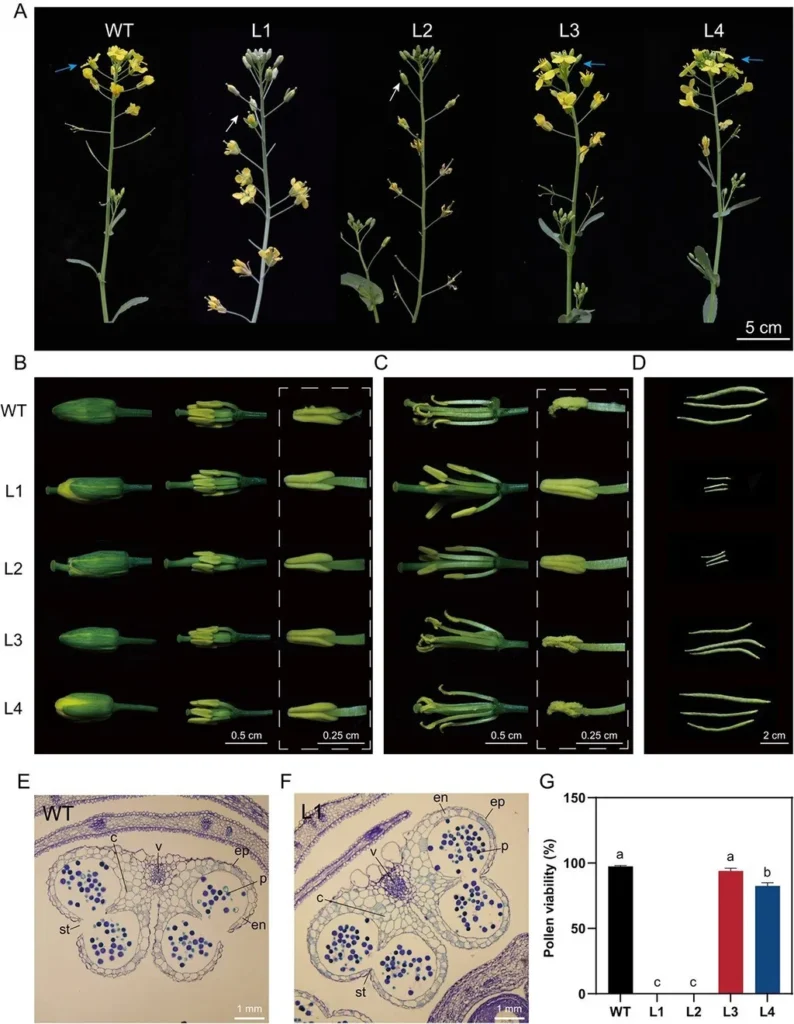In the heart of China, at the College of Landscape Architecture and Art Design, Hunan Agricultural University, a team of researchers led by Xiaoli He has uncovered a genetic treasure trove that could reshape our understanding of one of the world’s most important oilseed crops, Brassica napus, commonly known as rapeseed. Their work, published in the journal ‘Plants’ (which translates to ‘Plants’ in English), delves into the intricate world of KNOX genes, shedding light on their structure, evolution, and function in this vital plant species.
KNOX genes, a family of homeobox genes, are known for their pivotal roles in plant development, particularly in cell-fate determination and body plan specification during early embryogenesis. However, their specific gene structure and functional differentiation in Brassica napus have remained a mystery—until now. He and her team have identified a total of 32 KNOX genes in Brassica napus, with 15 and 14 genes found in its progenitor species, Brassica rapa and Brassica oleracea, respectively. This discovery is a significant step forward in understanding the genetic makeup of these polyploid plants, which have undergone genome triplication after the divergence of Arabidopsis and Brassiceae.
The researchers’ phylogenetic analysis classified the Brassica napus KNOX genes (BnKNOXs) into three distinct classes, each with a conserved domain organization. “This classification provides a solid foundation for further functional studies of BnKNOX genes,” He explained. The team’s synteny analysis revealed that the expansion of the BnKNOX family during allopolyploidization was primarily due to whole-gene and segmental duplications, offering insights into the evolutionary history of these genes.
The study also explored the expression patterns of BnKNOX genes, dividing them into three classes based on their expression dynamics. Class I genes exhibited moderate and specific expression in buds and inflorescence tips, while Class III genes showed specific low expression in seeds and stamens. The second class, however, displayed expression in most tissues, highlighting the diverse roles these genes play in plant development.
Perhaps one of the most intriguing findings was the distinct subcellular localizations of the candidate genes from the three classes. “We found that BnSTM-C and BnKNAT3a-A were predominantly localized in the nucleus, while BnKNATM1-A was found in the cytoplasm,” He revealed. This discovery suggests that these genes may have different functions and regulatory mechanisms, opening up new avenues for research.
The implications of this research extend beyond the realm of academic curiosity. Understanding the genetic underpinnings of Brassica napus could have significant commercial impacts, particularly in the energy sector. Rapeseed is a major source of biodiesel, and improving our knowledge of its genetic makeup could lead to the development of more efficient and productive strains. “By unraveling the complexities of KNOX genes, we hope to pave the way for future advancements in crop improvement and biotechnology,” He said.
This study, with its comprehensive analysis of KNOX genes in Brassica napus, provides a foundation for further functional studies and offers valuable insights into the genetic evolution and diversification of this important crop. As we continue to explore the intricacies of plant genetics, we edge closer to unlocking the full potential of Brassica napus and other crops, with far-reaching implications for agriculture, bioenergy, and beyond.

